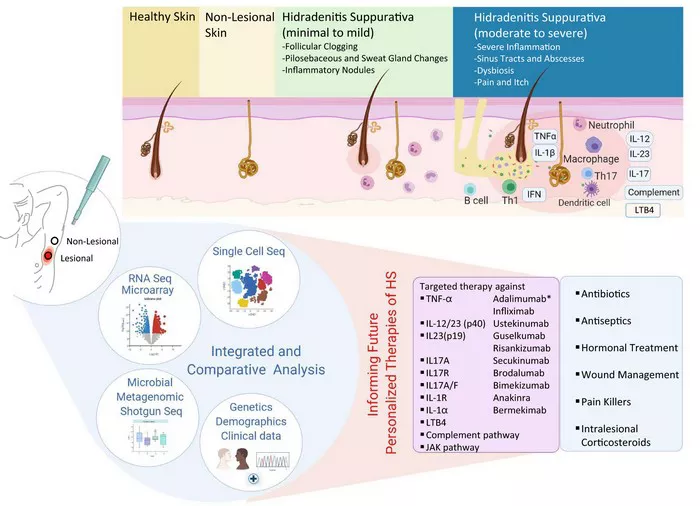Hidradenitis Suppurativa (HS) is a chronic skin condition characterized by painful nodules, abscesses, and tunnels that develop in areas where skin rubs together, such as the armpits, groin, buttocks, and under the breasts. This debilitating condition affects individuals of all ages and backgrounds, significantly impacting their quality of life. Despite its prevalence, the exact causes of Hidradenitis Suppurativa remain a subject of ongoing research and medical investigation. This article aims to shed light on the multifaceted factors contributing to the development of HS, providing a comprehensive understanding of this enigmatic skin disorder.
Genetic Predisposition
In the quest to unravel the roots of Hidradenitis Suppurativa, researchers have identified a strong genetic component. Studies suggest that individuals with a family history of HS are more likely to develop the condition, indicating a hereditary predisposition. Genetic factors play a crucial role in determining one’s susceptibility to HS, although the specific genes involved are still under exploration. Understanding the genetic underpinnings of HS is a key step towards developing targeted treatments and interventions.
Inflammatory Pathways
Inflammation is a hallmark of Hidradenitis Suppurativa, and researchers have delved into the intricate inflammatory pathways that contribute to the development and progression of the disease. Dysregulation of the immune system appears to be a central player in HS, with an exaggerated inflammatory response leading to the formation of painful nodules and abscesses. The exact triggers for this inflammatory cascade are not fully understood, but ongoing research is focused on identifying the specific molecules and pathways involved.
Obesity and Metabolic Factors
An intriguing association exists between Hidradenitis Suppurativa and obesity. Studies have consistently demonstrated a higher prevalence of HS in individuals with obesity, suggesting a link between metabolic factors and the development of the condition. Obesity may contribute to the formation of HS through various mechanisms, including increased friction between skin folds, altered immune function, and hormonal changes. Exploring the intricate interplay between obesity and HS opens avenues for lifestyle modifications and targeted interventions to manage and prevent the disease.
Hormonal Influence
Hormonal factors play a significant role in the pathogenesis of Hidradenitis Suppurativa. The condition often manifests or worsens during puberty and is more common in women. Fluctuations in hormonal levels, particularly androgens (male hormones), are believed to contribute to the development of HS. This hormonal influence may explain the gender disparity observed in the prevalence of the disease. Further research is needed to elucidate the specific mechanisms by which hormones contribute to HS, paving the way for hormone-modulating therapies.
Environmental Triggers
While genetic and biological factors are pivotal, environmental triggers also play a role in the onset and exacerbation of Hidradenitis Suppurativa. Smoking, for instance, has been identified as a potential environmental risk factor for HS. The chemicals in tobacco smoke may contribute to inflammation and immune system dysregulation, exacerbating the symptoms of the disease. Identifying and minimizing exposure to environmental triggers can be crucial in managing and preventing the recurrence of HS.
Microbial Dysbiosis
The skin is home to a diverse community of microorganisms, collectively known as the skin microbiome. Emerging research suggests that alterations in the skin microbiome may contribute to the development of Hidradenitis Suppurativa. Microbial dysbiosis, characterized by an imbalance in the types and abundance of skin bacteria, may trigger inflammatory responses and contribute to the formation of painful lesions. Investigating the role of the skin microbiome in HS opens new avenues for targeted therapies, such as probiotics and microbiome-modulating treatments.
Conclusion
Hidradenitis Suppurativa remains a complex and challenging condition, with its roots embedded in a combination of genetic, inflammatory, hormonal, environmental, and microbial factors. As researchers continue to unravel the mysteries surrounding HS, a more comprehensive understanding of the disease will pave the way for innovative treatments and improved patient outcomes. Genetic studies, exploration of inflammatory pathways, and investigations into the interplay between obesity, hormones, and the environment are crucial in developing personalized and effective strategies for managing Hidradenitis Suppurativa. By addressing the multifaceted nature of this skin disorder, healthcare professionals can offer better support to individuals living with HS and work towards a future where the impact of this condition is minimized.

























